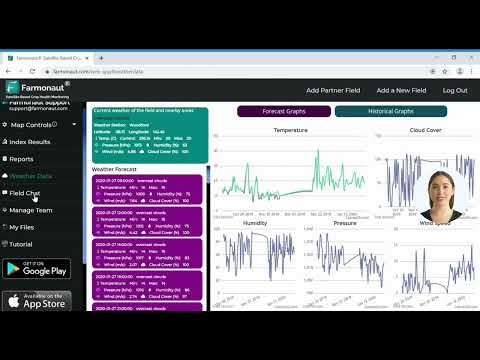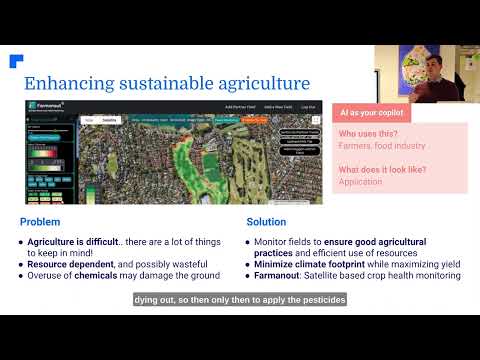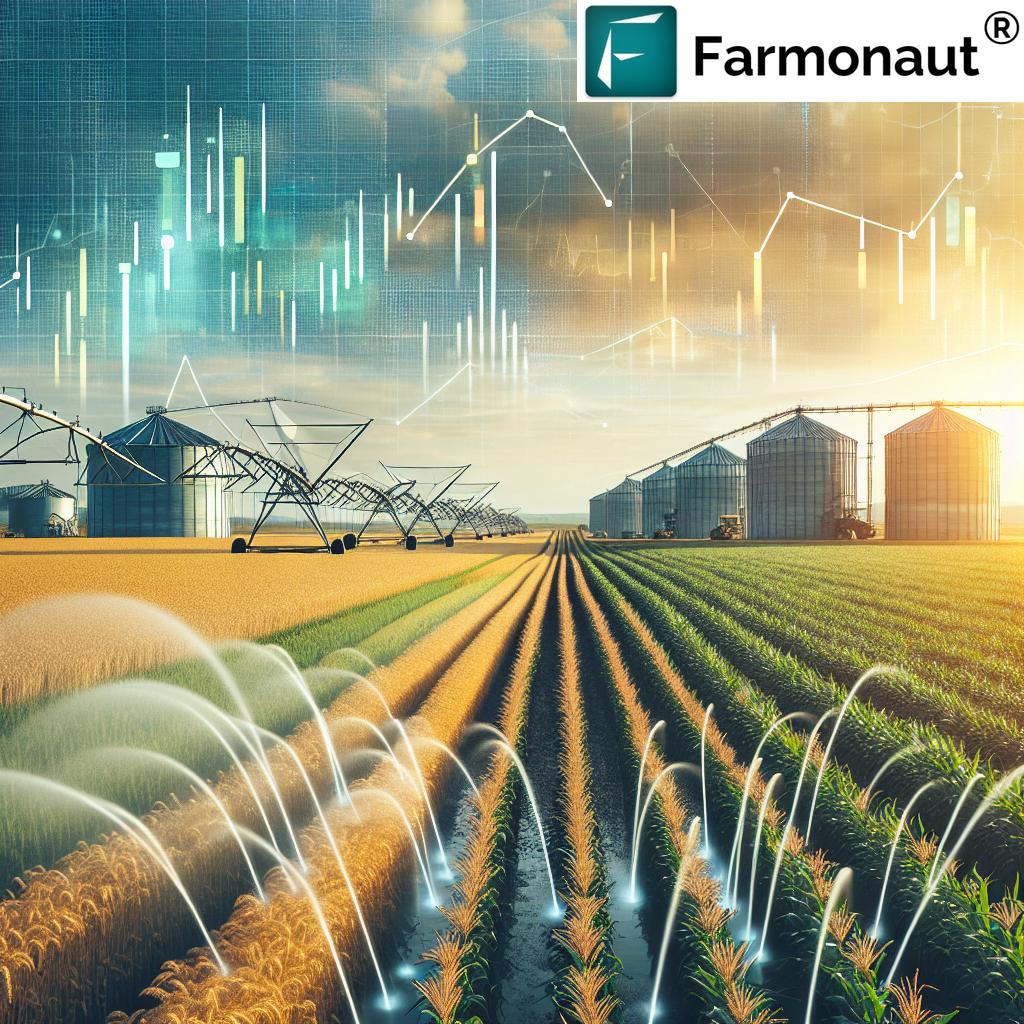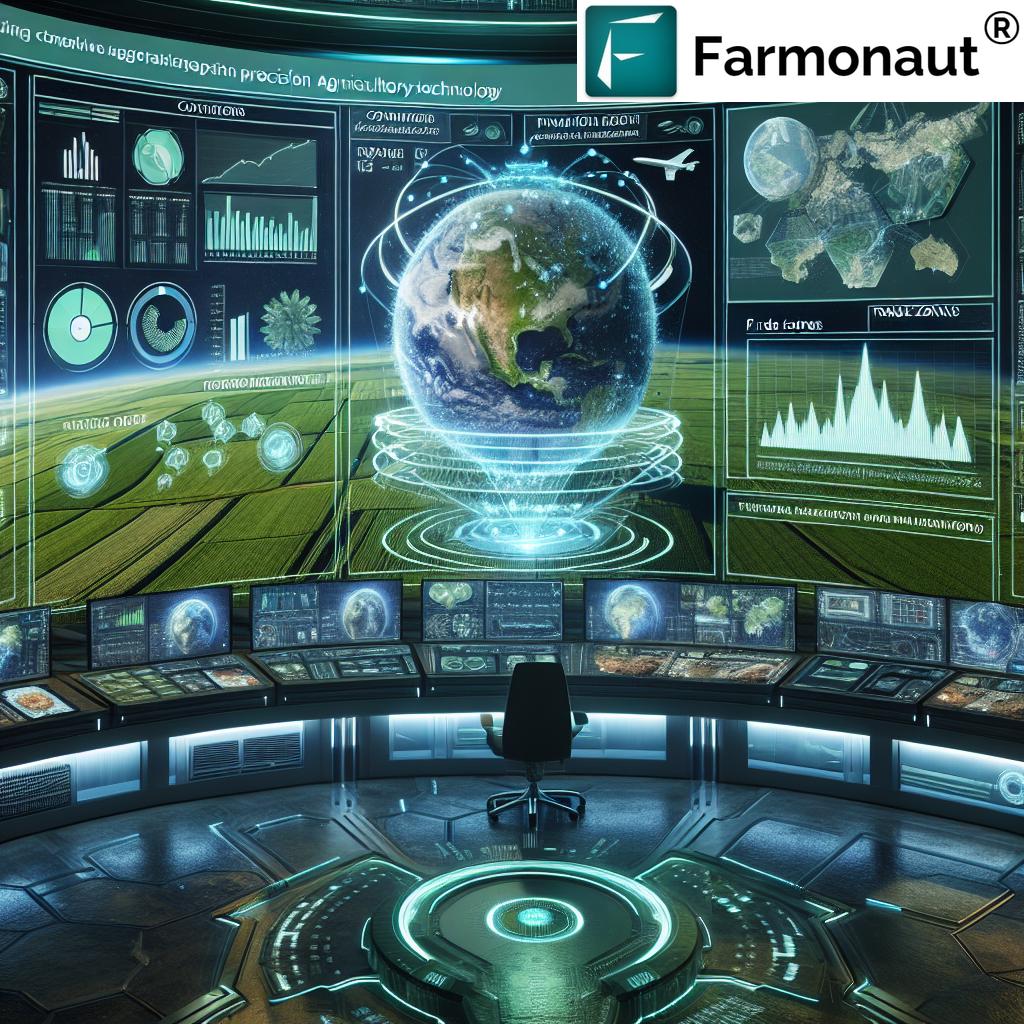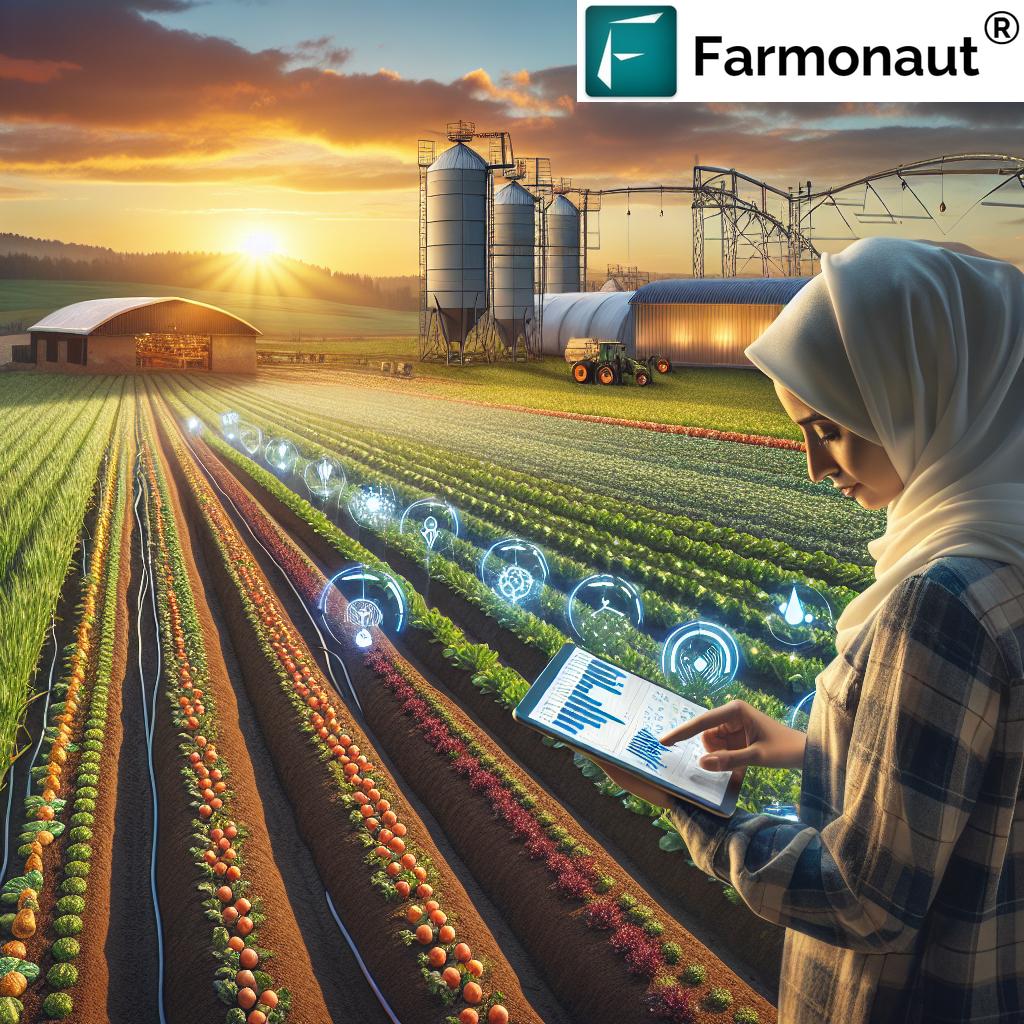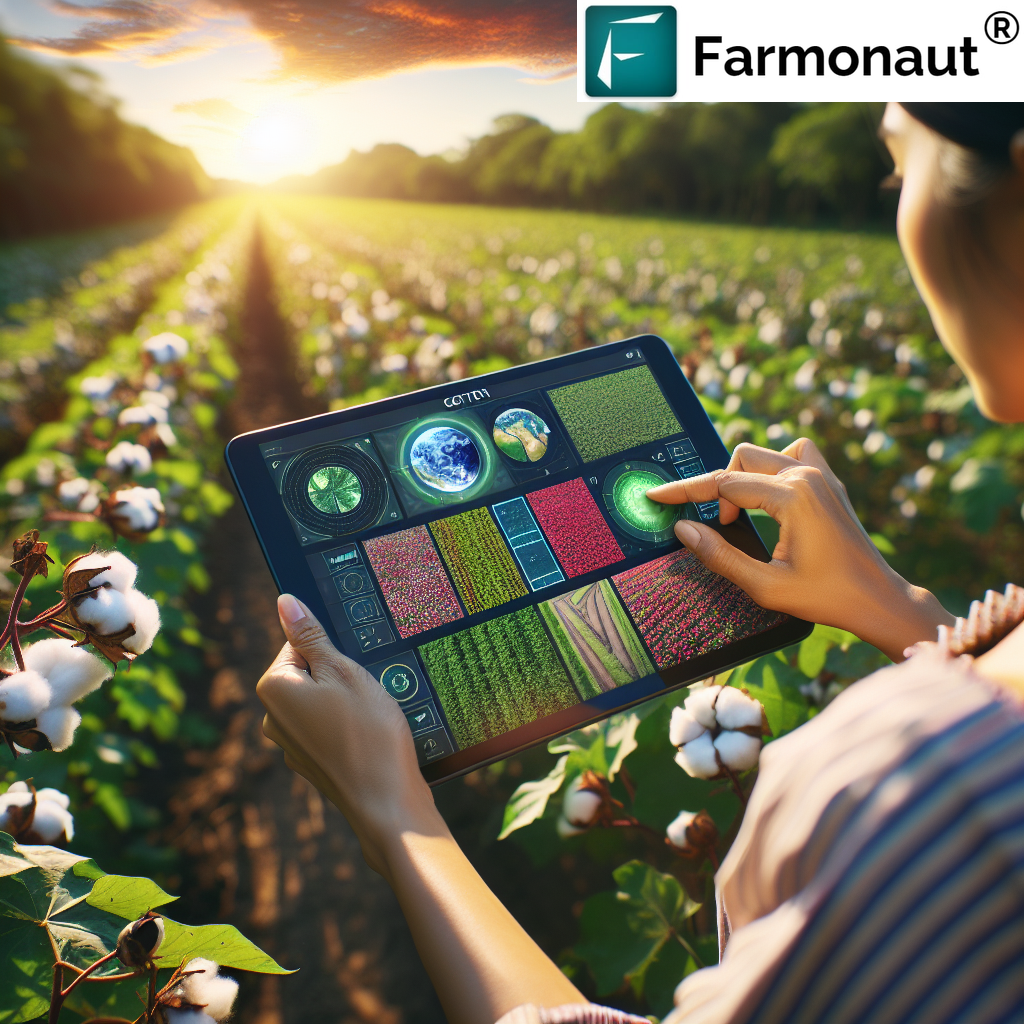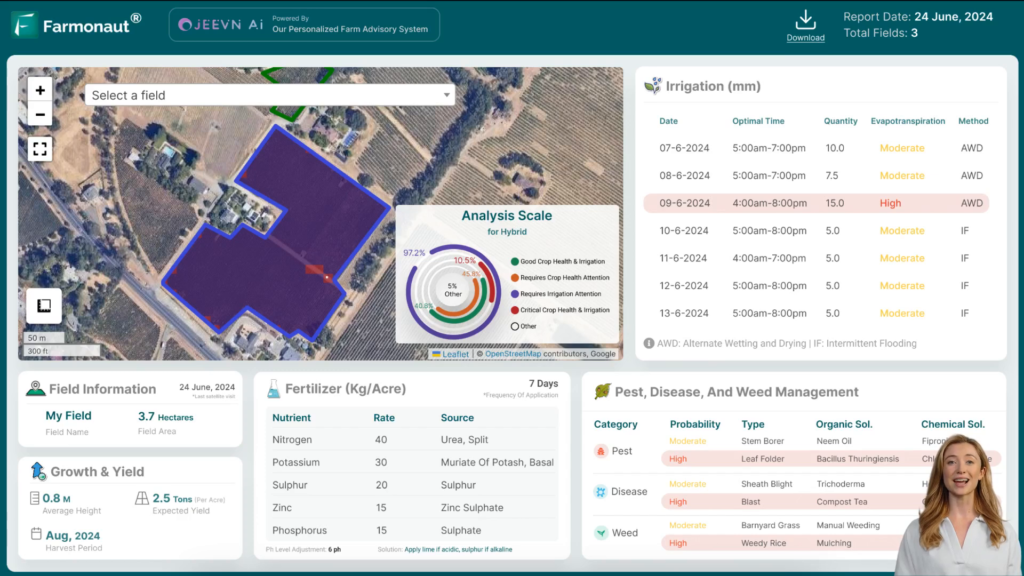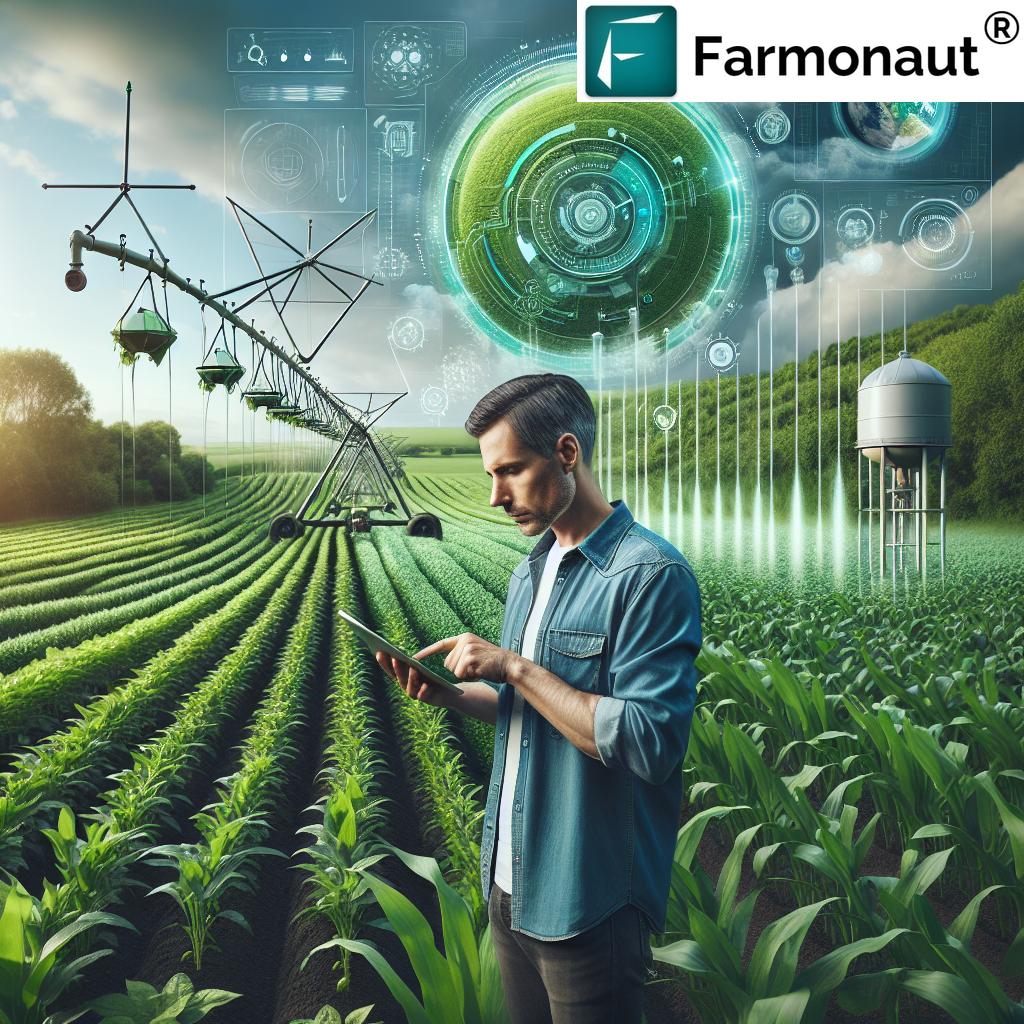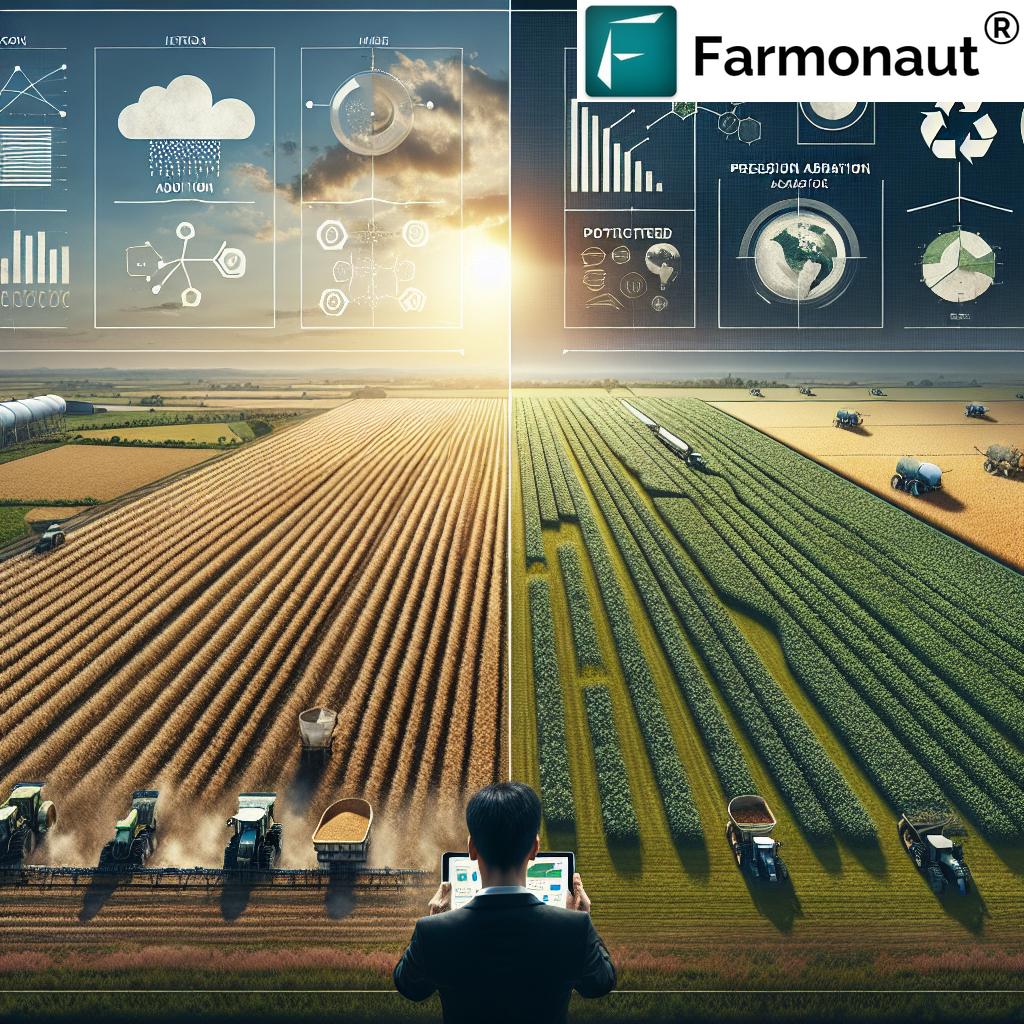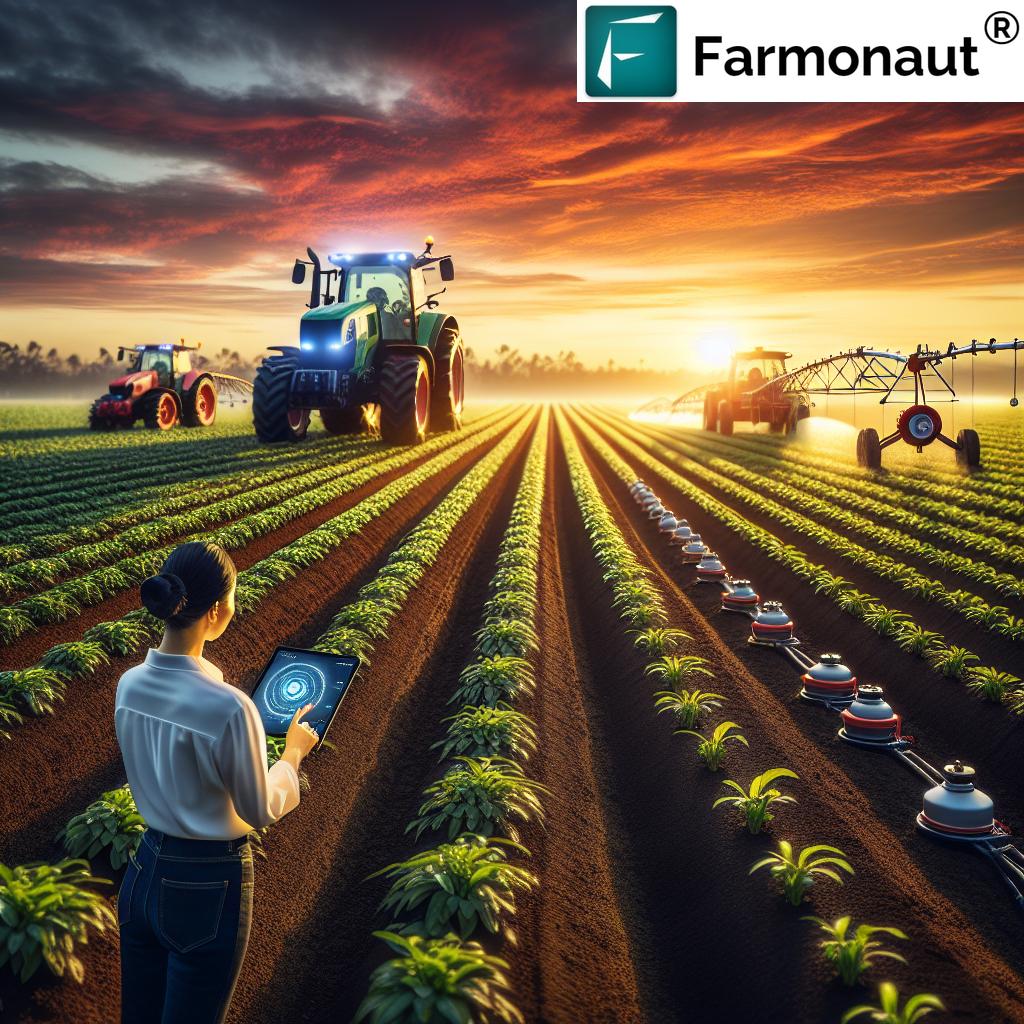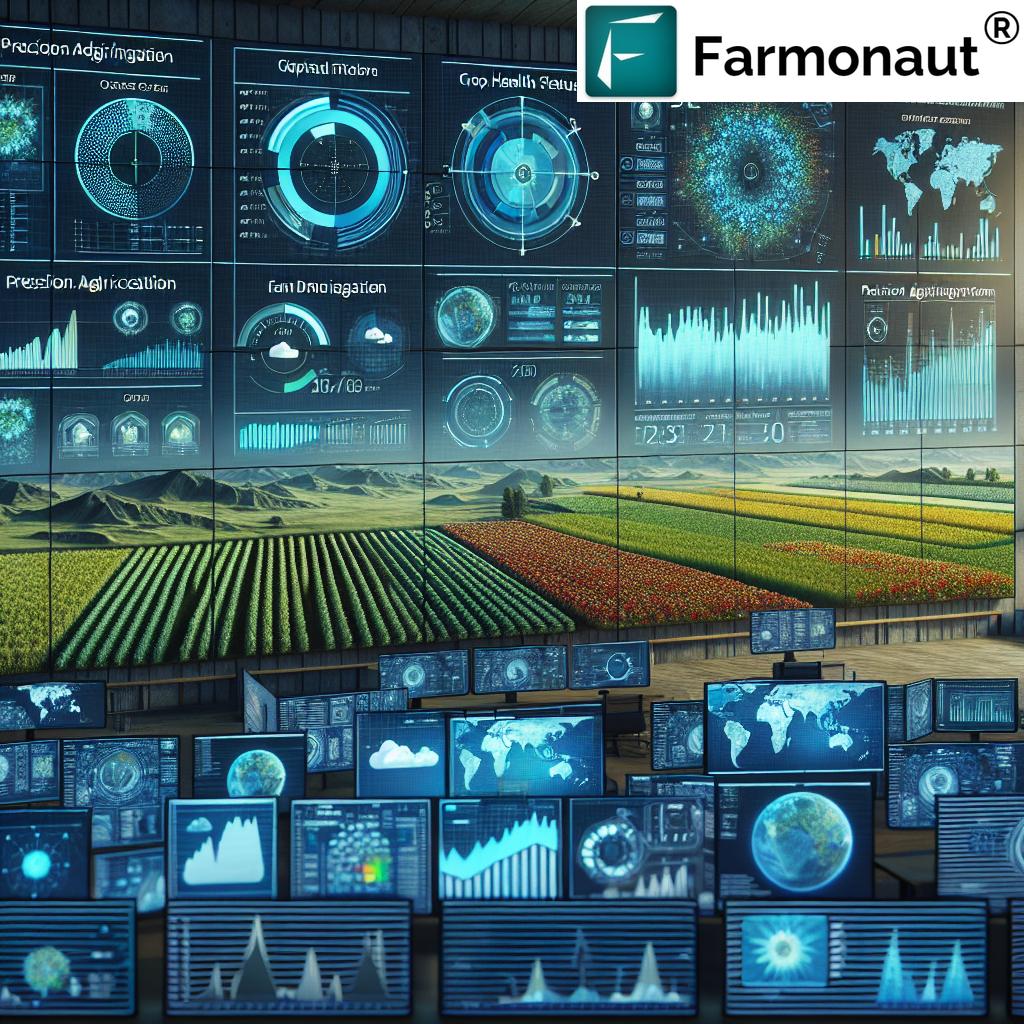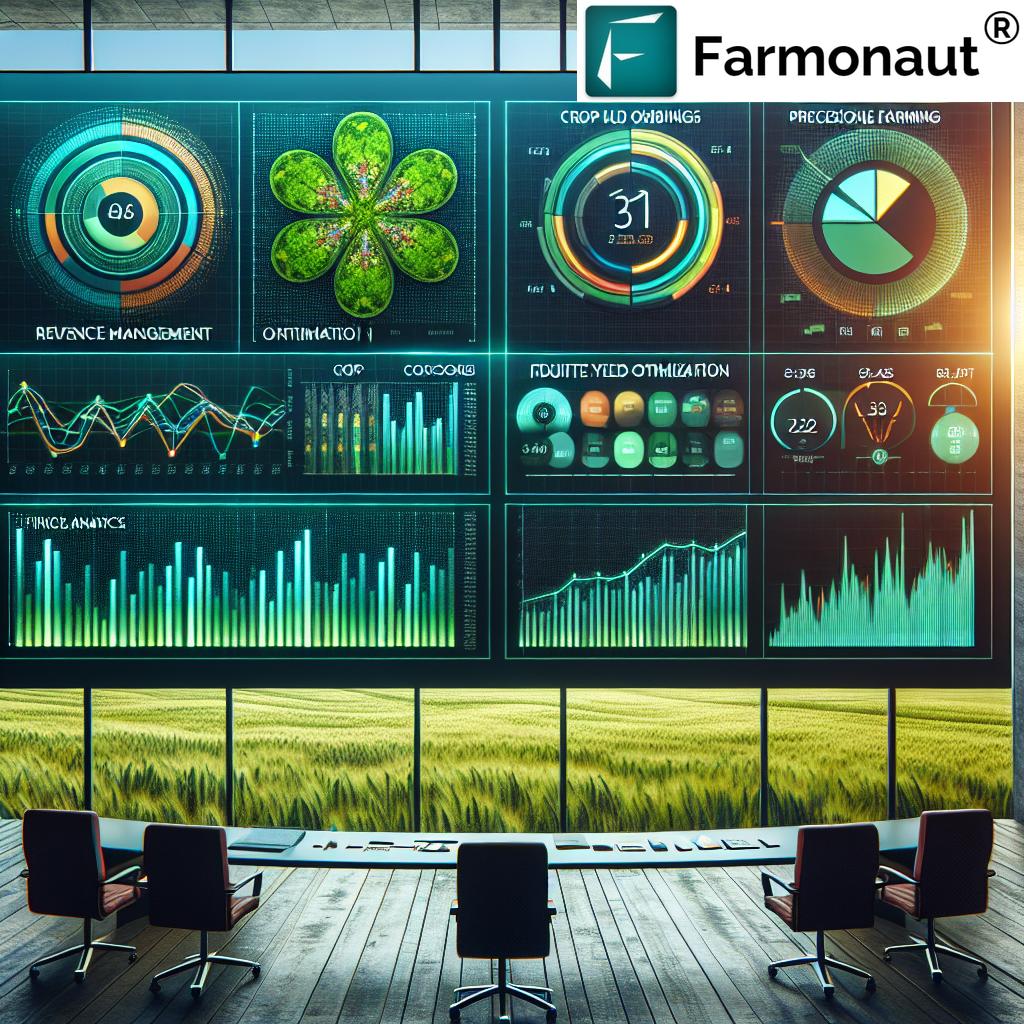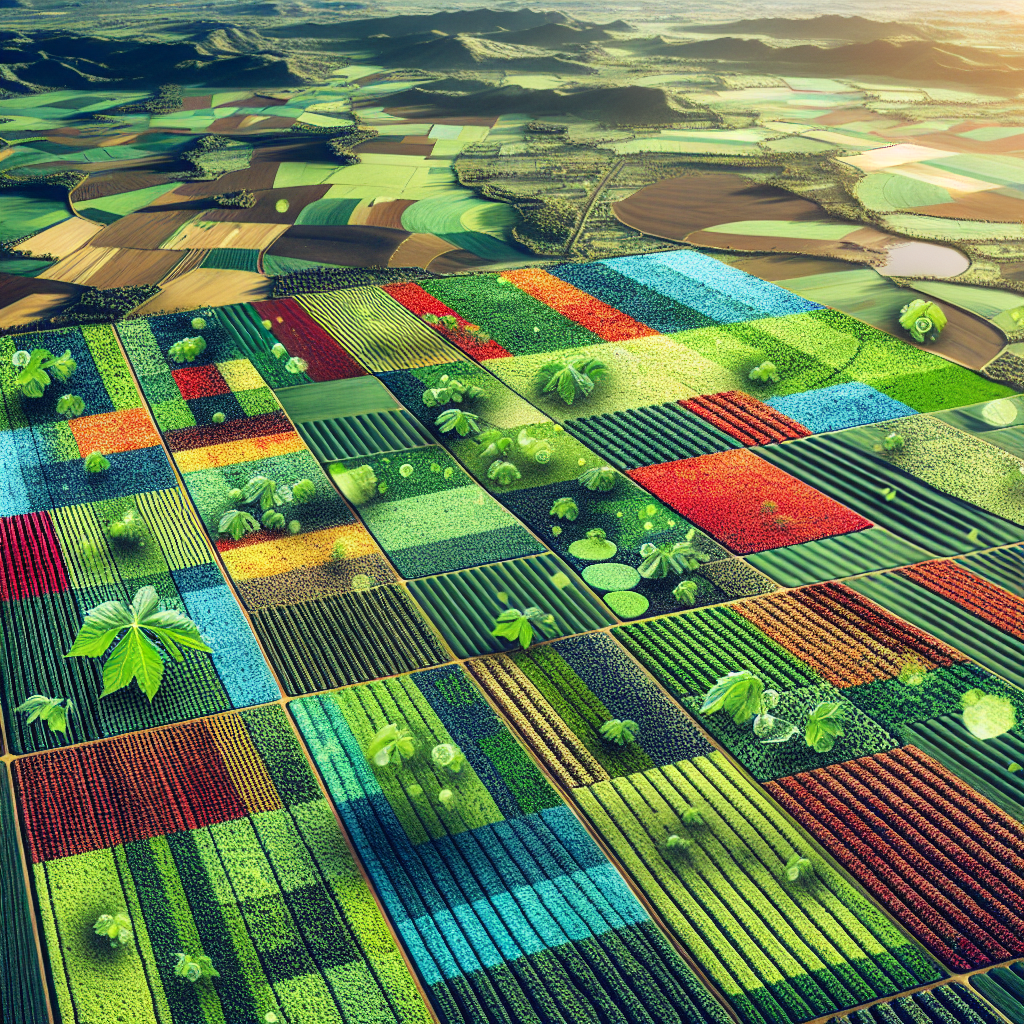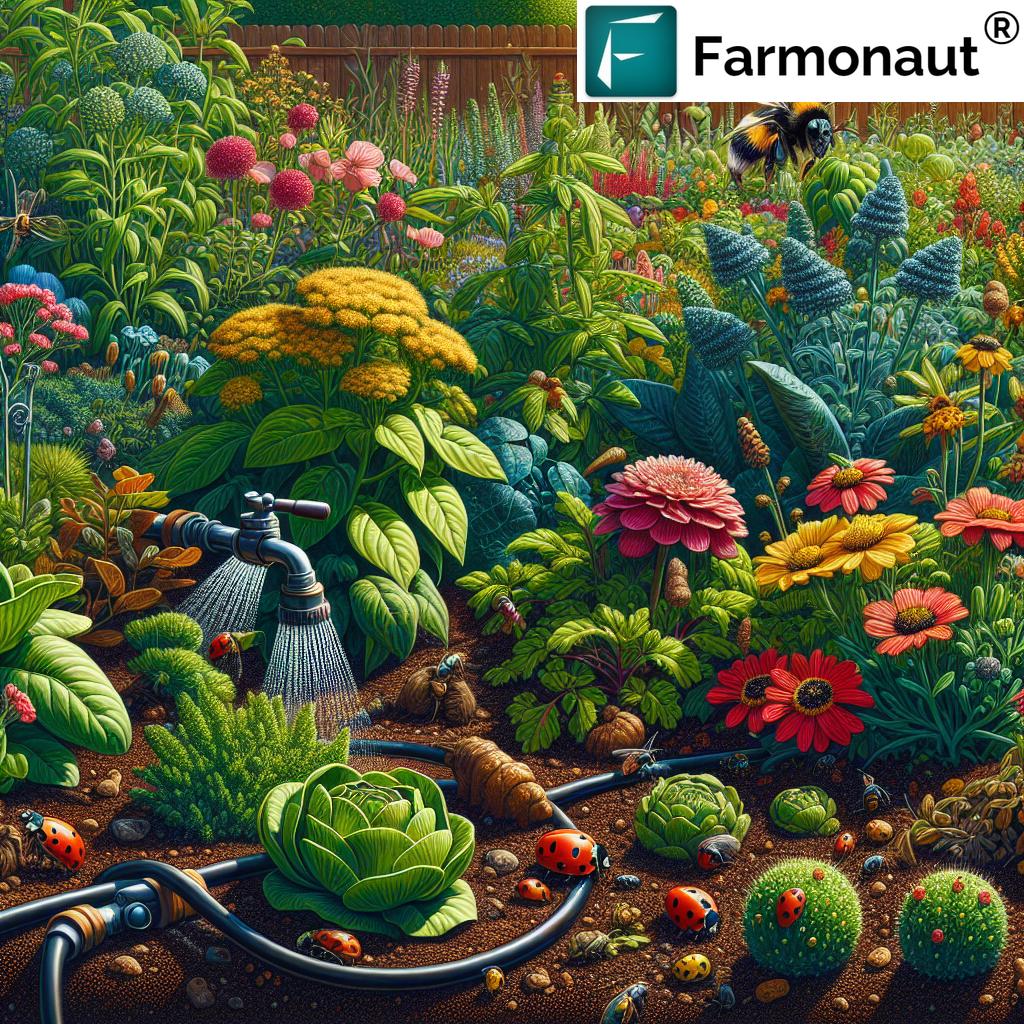Digital Farming Technology: 7 Tools Boosting Yields Fast
- Introduction to Digital Farming Technology
- Why Digital Farming Technology Matters
- The 7 Core Tools Powering Digital Farming Technology
- Feature-Impact Table: Comparing Digital Tools
- Farmonaut: Advanced Digital Farming Technology for All
- Key Benefits of Digital Farming Technology
- Challenges in Adoption & Considerations
- The Promising Future of Digital, AI-Driven Farming
- Frequently Asked Questions
- Farmonaut Subscription Plans
Introduction to Digital Farming Technology
We are in the midst of an agricultural revolution. Digital farming technology—often known as precision agriculture—is transforming how farmers manage their crops, use resources, and make crucial decisions. By integrating advanced digital tools like AI, IoT, drones, blockchain, and analytics into traditional farming practices, we can improve efficiency, sustainability, and crop yields at scales previously unimaginable.
At its core, digital farming equips us with real-time, accurate data. This empowers farmers to make timely, data-driven decisions, ensuring resources like water, fertilisers, and pesticides are used optimally—reducing both waste and costs. Let’s explore how these technologies are changing the landscape of modern agriculture.
Why Digital Farming Technology Matters
With rapid population growth and increasing climate pressures, the agricultural sector faces immense challenges. Scarcity of arable land, water shortages, unpredictable weather, and the drive toward sustainable farming practices require innovative solutions. That’s where digital farming technology comes into play.
- Boost crop yields fast: Optimizing every input and task increases output dramatically.
- Reduce environmental impact: Less waste, smarter resource use, and lower emissions via sustainable approaches.
- Enhance decision-making: Actionable, real-time insights from sensors, satellite images, and AI predictions.
- Lower costs: Precision applications reduce spending on inputs—fertilizers, pesticides, and water.
Digital tools and data analytics have unlocked opportunities for efficiency and profitability—benefiting farmers globally. And with solutions like those provided by Farmonaut, digital transformation is now affordable and accessible.
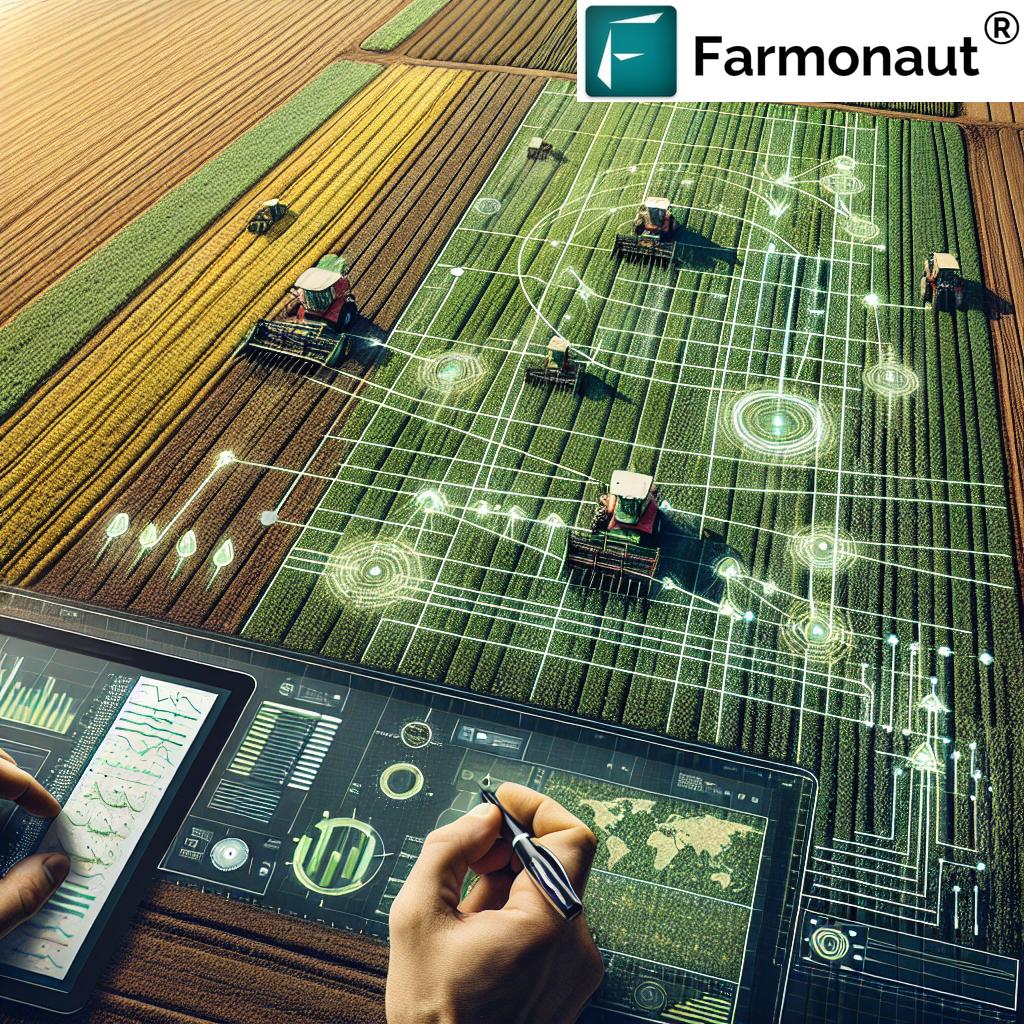
The 7 Core Tools Powering Digital Farming Technology
Let’s deep dive into the seven core digital farming technologies that are rapidly boosting yields, optimizing sustainability, and powering the global shift to data-driven farm management.
1. Internet of Things (IoT) and Sensors
The Internet of Things (IoT) is revolutionizing smart farming tools by integrating wireless sensors across the entire farming ecosystem. These IoT sensors for farming constantly collect real-time data on parameters such as:
- Soil moisture & temperature
- Nutrient levels
- Weather conditions
- Crop growth metrics
With this data at our fingertips, we can:
- Deploy smart irrigation systems that adjust watering schedules automatically based on current soil moisture and weather.
- Ensure timely interventions for pest, disease, or nutritional issues by monitoring field conditions in real time.
- Reduce waste and optimize water usage to support sustainability.
Sensors help minimize over- or under-watering and prevent unnecessary chemical use—transforming farm efficiency and maximizing yields.
2. Drones and Aerial Imaging
Drones in agriculture are game-changers, delivering fast and detailed aerial imaging that lets us assess large fields in minutes rather than days. Drones equipped with multispectral cameras and advanced sensors can:
- Capture high-resolution images to assess crop health
- Spot nutrient deficiencies, detect diseases, and find pest outbreaks
- Track plant growth patterns and overall field variability
This aerial perspective means we can perform early detection, deliver targeted treatments, and minimize resource usage. By integrating with digital farm management systems, we ensure better allocation of inputs and faster responses to issues.
3. Artificial Intelligence (AI) and Machine Learning
The introduction of AI in agriculture allows us to leverage machine learning algorithms for in-depth data analysis far beyond human capability. By analyzing datasets that include:
- Historical weather data
- Soil and crop records
- Current field conditions
AI can:
- Predict crop yields with high accuracy
- Identify emerging disease outbreaks before they cause major losses
- Optimize planting strategies and schedules based on real-time environmental data
- Deliver actionable insights via tailored recommendations and automated alerts
AI is driving a shift to data-driven farm management and helping us make better, faster, and more profitable decisions in the field. For a complete AI-based farm advisory system, Farmonaut’s Jeevn AI integrates satellite and sensor data to deliver real-time, tailored advice to farmers.
Discover how AI elevates your farm management with Farmonaut’s real-time advisory tools.
4. Robotics and Automation
Robotics and automated machinery are performing farm tasks with unmatched precision and speed. This includes:
- Self-driving tractors that perform automated planting, fertilizing, and harvesting
- Robotic weeders and crop monitoring bots
- Automated sorting, grading, and packing in post-harvest operations
With these advanced technologies, we achieve:
- Substantial labor cost reductions
- Consistent and repeatable operational efficiency
- Enhanced accuracy and less crop damage due to human error
Robotic systems sync seamlessly with other digital tools, making precision agriculture solutions accessible at scale.
5. Geographic Information Systems (GIS)
Geographic Information Systems (GIS) are crucial for visualizing field spatial data. By mapping parameters like soil variability, yield patterns, and moisture distribution, GIS helps us:
- Pinpoint field areas needing extra attention or resources
- Implement Variable Rate Technology (VRT) to apply fertilizers/pesticides only where needed
- Track changes in crop health, growth, and productivity over time
The integration of GIS with sensors and imaging allows for precision management—boosting yields and reducing input costs.
6. Blockchain and Traceability
Blockchain traceability in agriculture secures data, enhances transparency, and assures product integrity from farm to consumer. By recording every transaction on a decentralized ledger, blockchain enables:
- Complete traceability of agricultural products
- Proof of ethical sourcing and quality (valuable for premium international markets)
- Reduced risk of supply chain fraud
Blockchain-powered traceability opens new markets and strengthens trust. For agribusinesses and food brands, Farmonaut delivers affordable, robust blockchain-based traceability solutions for full visibility and consumer confidence.
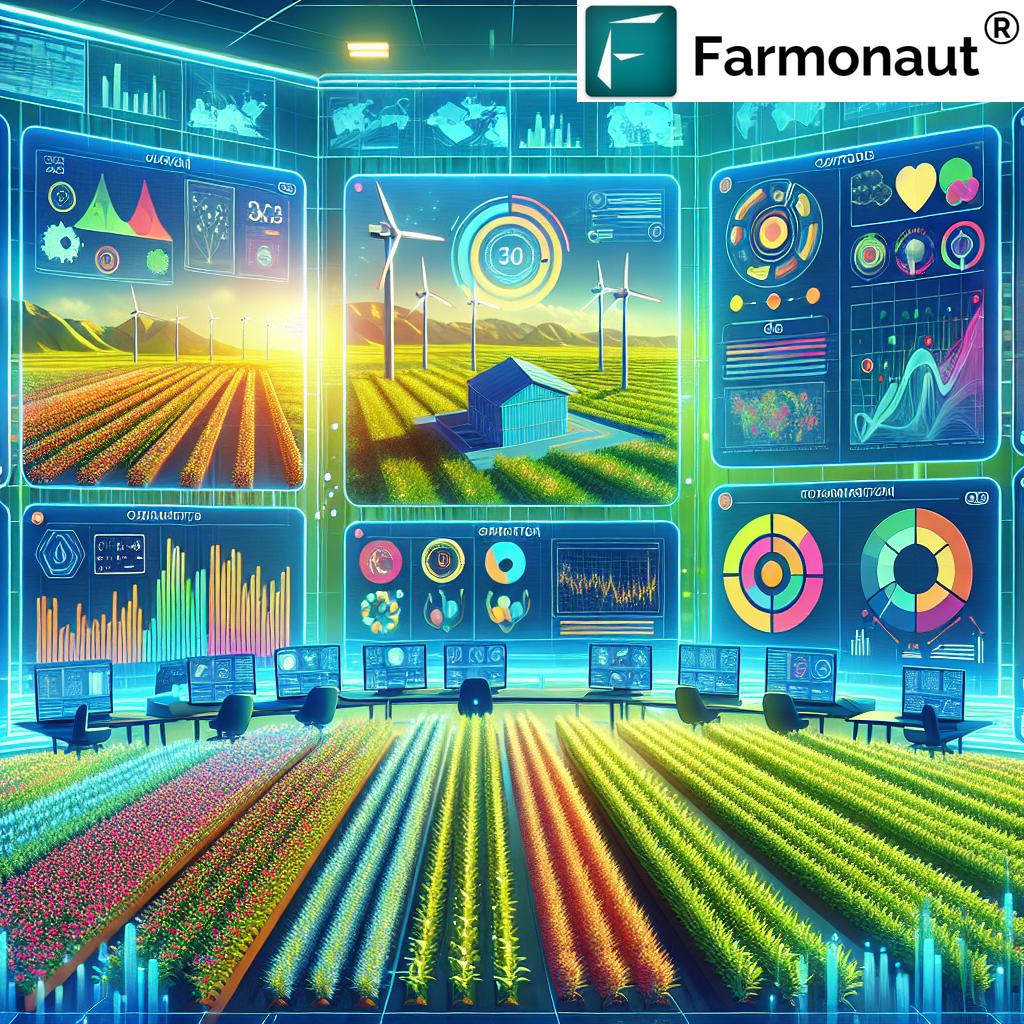
7. Farm Management Platforms & APIs
Comprehensive farm management platforms digitally integrate all the above tools—satellite imagery, IoT, analytics, blockchain—onto a single dashboard. This ensures:
- Centralized, data-driven farm oversight and task scheduling
- Automated alerts, reports, and compliance tracking
- Mobile access for real-time management anywhere
Farmonaut stands out as an advanced, satellite-powered farm platform for crop monitoring, resource tracking, and smart decision support. For developers and organizations, Farmonaut’s robust API and API Docs enable seamless integration of digital, AI, and weather data at any desired scale.
Comparative Feature-Impact Table: Digital Farming Technology Tools
| Digital Tool | Core Function | Estimated Yield Boost (%) | Sustainability Impact | Underlying Technology | Example Application |
|---|---|---|---|---|---|
| Internet of Things (IoT) & Sensors | Real-time field monitoring; optimizes irrigation/fertilizer schedules | 10–20% | Reduces water & chemical waste; boosts soil health | IoT networks, Soil/Moisture/Env Sensors, Data Analytics | Smart irrigation adjusts watering based on soil moisture & weather |
| Drones & Aerial Imaging | High-res crop mapping, detects health issues early | 8–15% | Early pest/disease detection cuts pesticide use | Remote Sensing, Multispectral Cameras, Drone Tech | Spotting nutrient deficiencies and optimizing input placement |
| AI & Machine Learning | Predict yields, identify diseases, optimize planting & input | 15–30% | Reduces over-application of inputs; conserves resources | AI Algorithms, Big Data Analytics, Cloud Computing | Automated alerts for disease risk & precise input recommendations |
| Robotics & Automation | Automated tasks—planting, weeding, harvesting | 10–25% | Saves labor, energy, & lowers emissions | Robotic Machines, Autonomy Systems, GPS Guidance | Self-driving tractor completes planting & fertilizing efficiently |
| GIS | Spatial analysis & mapping for precision input application | 5–12% | Prevents over-usage of chemicals in specific field zones | GIS Software, Satellite Imagery, Location Analytics | VRT application of fertilizer/pesticides by mapped need |
| Blockchain & Traceability | Supply chain transparency, fraud reduction, ethical sourcing | Variable (Market access ↑) | Supports sustainable sourcing & quality verification | Blockchain Ledgers, Data Security, QR Trace | ID tracking of produce from seed to shelf using blockchain |
| Farm Management Platforms & APIs | Centralizes data; enables automated reporting & resource tracking | 10–20% | Optimizes all resource flows, reporting for compliance | App/Web Platforms, APIs, Satellite, IoT, AI Integration | Real-time crop health dashboard for on-the-go decision making |
Farmonaut: Advanced Digital Farming Technology for All
In the fast-evolving landscape of digital farming technology, Farmonaut leads the charge with satellite-powered, AI-enhanced solutions crafted for every level of the agricultural ecosystem. Our mission is to make precision agriculture solutions not just cutting-edge—but also affordable and easy to access for farmers worldwide.
Farmonaut’s Key Technologies:
- Satellite-Based Crop Health Monitoring: We utilize up-to-date multispectral satellite imagery to track crop health, soil moisture, and vegetative indices (NDVI, etc.). Farmers can take timely, data-driven actions to optimize watering, fertilization, and pest/disease management for higher yield and lower input cost.
- AI-Based Jeevn Advisory System: Our AI system delivers actionable, real-time insights and weather-driven advice, tailored to local field conditions—boosting farm productivity and efficiency.
- Blockchain-Based Product Traceability: By employing blockchain traceability in agriculture, Farmonaut ensures every step from field to shelf is authentic, secure, and verifiable—opening new markets and inspiring consumer trust.
-
Resource, Fleet, and Large-Scale Farm Management: With real-time tracking tools and admin dashboards, enterprises and cooperatives can manage fleets
and large multi-farm operations seamlessly using remote sensing, machine learning, and analytics. - Carbon Footprinting: We offer real-time emissions monitoring for farms/agri-businesses, supporting compliance and sustainable farming practices.
Unlike traditional precision farming tools that require significant upfront investment in hardware, Farmonaut offers a cloud-based, subscription model and mobile/web apps, making advanced digital agriculture technologies scalable for all—from small family farms to large commercial agribusinesses.
Read further about how subscription-based, modular access opens up a world of digital innovation for every agricultural stakeholder.
Key Benefits of Embracing Digital Farming Technology
1. Increased Efficiency
- Automated data collection and analysis minimize manual labor and improve response times.
- Precision irrigation alone can reduce water use by 20–50%, lower costs, and reduce crop stress.
- Smart scheduling means only the required amount of fertilizer or pesticide is used—and only where needed.
2. Enhanced Sustainability
- Sustainable farming practices are made possible by minimizing chemical inputs, optimizing resource use, and removing excess waste.
- Digital records and carbon tracking help meet regulatory and consumer demands for environmentally responsible agriculture. (See carbon footprint solutions)
3. Improved Crop Yields
- Improving crop yields with data is the core promise of digital technology: real-time monitoring and predictive AI lets us address plant stress, diseases, and nutrient deficiencies early.
- Targeted advice, informed by satellite data and AI analytics, leads to healthier, more productive crops.
4. Reduced Input and Labor Costs
- By optimizing inputs and automating routine tasks (with precision tools, robotics, and scheduling systems), costs drop while output rises.
5. Better Decision-Making through Data-Driven Insights
- Comprehensive data flows—from sensors, weather, and satellite imagery to AI-driven recommendations—empower farmers and managers to make informed choices constantly, not just seasonally or retroactively.
6. Transparency, Traceability, and New Market Access
- Blockchain traceability in agriculture gives buyers and consumers proof of product origin, ethical sourcing, and compliance.
- This opens doors to higher value global markets and strengthens our brand reputation.
7. Better Financing and Insurance Access
- Satellite-enabled verification and risk monitoring give lenders and insurers confidence to support farmers, paving the way to faster crop loans and better insurance products.
Challenges & Considerations in Implementing Digital Farming Technology
While the benefits are undeniable, some challenges must be addressed for smoother adoption of digital farming technology:
- High Initial Investment: Upfront costs for traditional precision ag hardware can be high, especially for smallholders. Cloud-based tools like Farmonaut lower this barrier dramatically.
- Data Privacy and Security: With increased data sharing, data ownership and privacy concerns arise. Transparent practices and robust security protocols are essential.
- Technical Complexity: Adopting new systems requires technical support and ongoing farmer education. User-friendly platforms and localized training remain priorities.
- Connectivity Issues: Reliable internet access is critical for IoT, cloud analytics, and real-time alerts. Rural connectivity gaps must be addressed, though mobile-first tools and offline sync help mitigate this issue.
- Change Management and Trust: Cultural resistance can slow technology adoption. Demonstrating measurable value and providing continuous support can help drive acceptance.
Farmonaut helps overcome these hurdles by offering easy-to-use interfaces, minimal setup, and accessible support, making advanced digital farming a reality for everyone—from rural fields to large cooperatives.
The Promising Future of Digital, AI-Driven Farming
With ongoing advancements in AI, robotics, blockchain, and connectivity, the future of digital farming technology is bright. Emerging trends to watch:
- Climate-Resilient Practices: Precision weather analytics and satellite monitoring enable smarter risk management for droughts, floods, and extreme events.
- Regenerative & Sustainable Agriculture: Carbon-tracking tools encourage low-impact practices—cover cropping, reduced tillage, and efficient resource usage.
- Digital Inclusion Initiatives: New training programs and localized support help more farmers reap the rewards of digital transformation.
- Renewable Energy Integration: Digital farm control systems are enabling optimal use of solar and wind energy for powering irrigation and processing.
- Hyperlocal Recommendations: Combining big data, machine learning, and on-farm sensors means every field can get unique, real-time advice.
- Platform Expansion: APIs and modular solutions (like those at Farmonaut) allow seamless scaling from smallholder plots to nationwide agricultural programs.
Our shared vision: a connected, sustainable agricultural future where digital innovation empowers every farmer, enhances food security, and safeguards our planet.
Frequently Asked Questions (FAQ) on Digital Farming Technology
-
What is digital farming technology and how does it differ from traditional agriculture?
Digital farming technology, sometimes called precision agriculture solutions, refers to integrating advanced digital tools (IoT, AI, drone, GIS, analytics, and blockchain) into farm management processes. Unlike traditional agriculture—which relies on manual observation and routine-based interventions—digital farming provides real-time data, automated insights, and precise recommendations to optimize every input, reduce waste, and increase efficiency.
-
How does IoT and sensor technology help improve farm efficiency?
By constantly monitoring key field conditions such as soil moisture and temperature, IoT sensors for farming enable smart irrigation, timely interventions, and data-driven adjustment of fertilizers or pesticides. This minimizes waste and boosts sustainability.
-
Are digital farming tools suitable for smallholder farms?
Absolutely! Farmonaut and similar platforms democratize access by removing expensive hardware requirements and offering affordable, cloud-based monitoring and advisory services—including on mobile apps.
-
What is blockchain traceability in agriculture?
Blockchain records every step of a product’s supply chain on a secure, immutable ledger. This ensures transparency, combats fraud, and adds trust for both buyers and end-consumers.
-
How can I start with digital farming technology?
Begin by collecting basic farm data using sensors or satellite monitoring platforms. Platforms like Farmonaut enable step-by-step scaling, from individual field monitoring to full integration with AI, blockchain, and large-scale analytics.
-
Can data-driven technology really increase crop yields?
Yes! Analysis indicates that AI-powered digital farming tools and precision analytics can increase average yields by 10–30%, reduce costs, and improve sustainability metrics.
-
How is my data kept secure in digital farming platforms?
Leading platforms adopt strong encryption, regular security audits, and transparent data policies. Blockchain adds another layer of data security and integrity, ensuring all entries are verifiable and tamper-proof.
Farmonaut Subscription Plans — Accessible Digital Farming for All
Whether you manage a single field or hundreds of hectares, there’s a Farmonaut package designed to help you monitor, optimize, and improve every aspect of your farm. Enjoy flexible, affordable subscriptions, instant onboarding with web/mobile apps, and the peace of mind of a secure, data-driven future for your agriculture.







